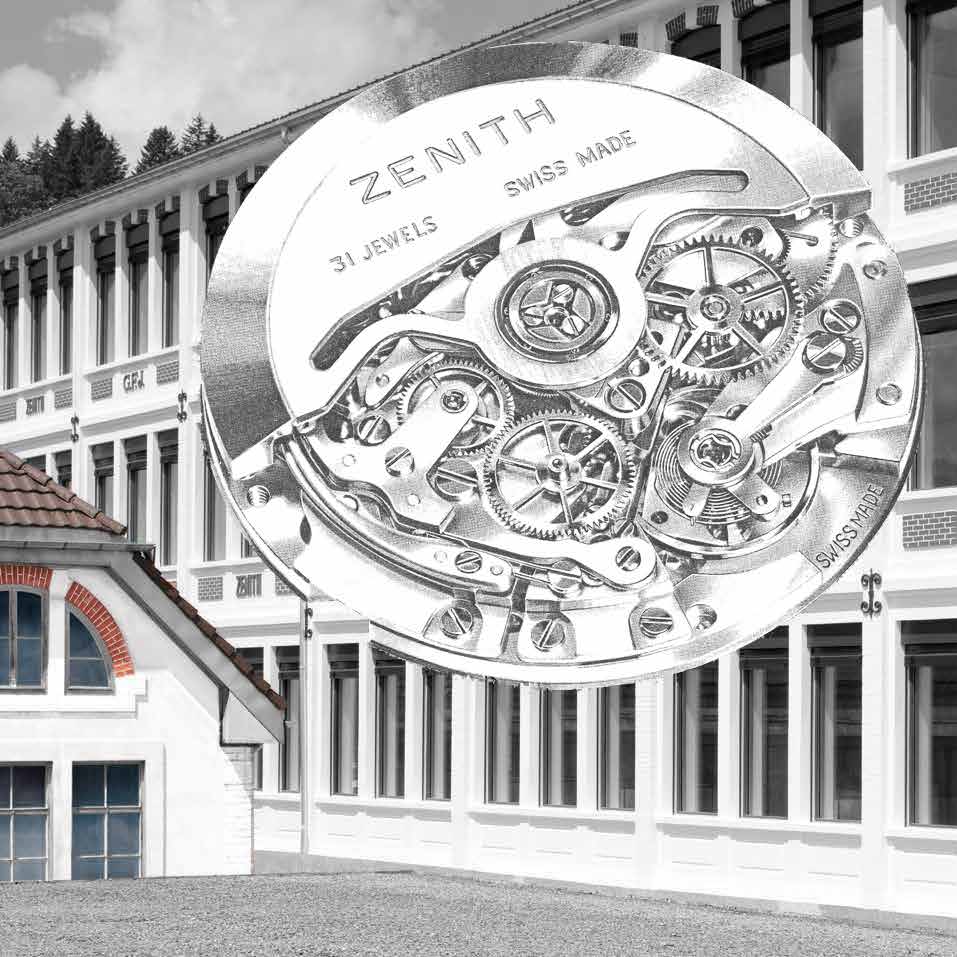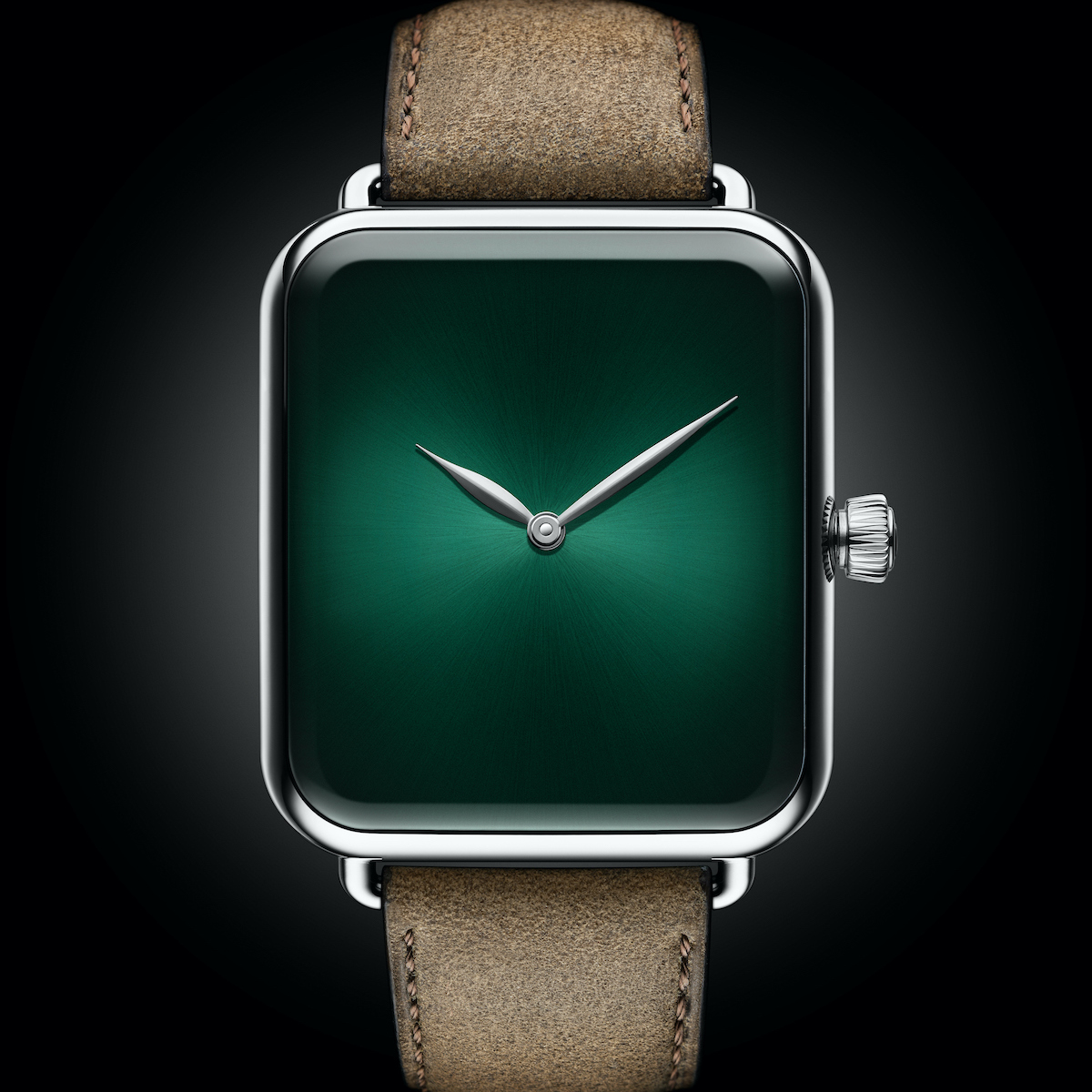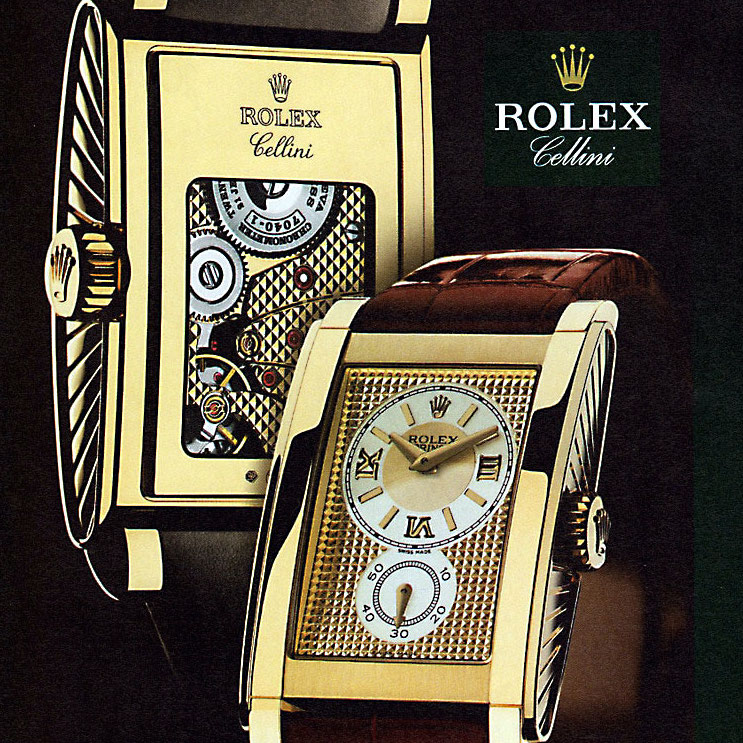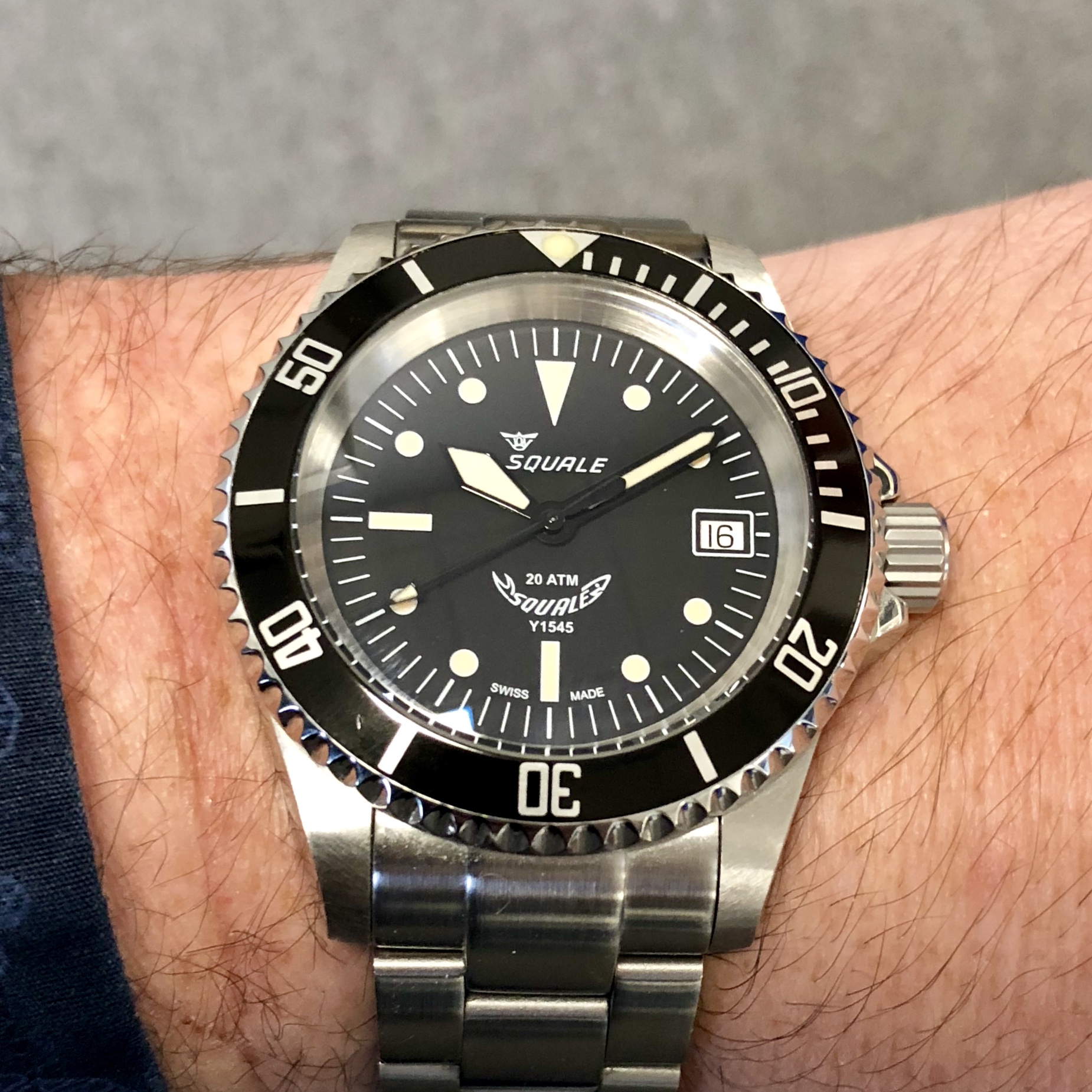Jose Pereztroika recently published another fascinating article “debunking the fictitious history of the Zodiac Sea Wolf,” in which he shows that this admired dive watch was probably launched in 1957 amid a wave of such releases and not in 1953 as is often claimed. This is important because a 1953 launch would place Zodiac alongside Rolex and (allegedly) Blancpain as a pioneer of dive watches rather than a fast follower like Eterna, Enicar, and many others. Although it is difficult to say definitively that Zodiac did not produce a dive watch in 1953, there is a great deal of circumstantial evidence to suggest that they, like many other watchmakers, followed the trend set primarily by Rolex, jumping into the dive category at the Basel Fair in 1958.

Why Rolex Pioneered Dive Watches
For most of the 20th century, sports and tool watches (including chronographs and watches for pilots, drivers, and divers) were not hot sellers. The market was so small and specialized that these watches were not even included in the post-World War I industry consolidation that lead to the creation of Ebauches SA, SSIH, and ASUAG. Although makers of specialty watches and watch movements were eventually absorbed into these groups, it was generally a result of their own stumbles rather than political pressure. Rolex (and their movement supplier Aegler) was highly unusual in remaining independent throughout this period.
But specialty watches were in demand from military customers. Over-sized watches and chronographs were essential tools for pilots and commanders, and many continued to wear these when they returned home. Rolex was the watch of choice for Allied soldiers in World War II, even supplying watches on credit to prisoners of war! Returning soldiers continued to practice some of the skills they learned in the war, elevating flying, camping, driving, and diving into real sports rather than practical skills. Traditionally the realm of wealthy gentlemen, the pursuit of “sport” became a global phenomenon in the 1950s.

Highly-specialized underwater watches had been built by Rolex for suppliers like Panerai to support “frogmen” during the war, as diving skill and technology developed rapidly in Italy, Germany, France, and the United States. Given their work on automatic movements and sealed cases, it is no surprise that Rolex was the pre-eminent maker of dive watches right from the start. The Oyster Perpetual name, still used for nearly every watch from Rolex, specifically refers to these twin technologies. From the watches worn by Italian “frogmen” during World War II to the specialty “Deep Sea” watches attached to bathyscaphes in the 1950s, no one can deny the importance of Rolex in the dive watch world!
So it is no surprise that Rolex was the first to bring a dive watch to the mass market, introducing the Submariner at the Basel Fair in 1954. Thanks to resources like the archives of Europa Star and The Watch Library we can see just how unusual that Submariner was! The automatic movement and rotating bezel were matched to an over-sized (for the time) case and bracelet built for practicality. There really was nothing else like it on the market, with the Blancpain Fifty Fathoms still a year away. Yet both the Submariner and Fifty Fathoms sold in small numbers until late in the decade, since there was no mass market for such clunky dive watches.
In summary, Rolex was uniquely positioned to deliver a range of unique tool watches in the early 1950s and did so, despite the fact that watch buyers were largely uninterested in buying them.
Watches For the Stylish 1950s
The chunky and utilitarian Rolex Submariner was exactly the wrong product for mainstream buyers in the 1950s. In contrast, companies like Zodiac were leaning into the technology and design trends that dominated sales. In the early part of the decade most were focused on the introduction of practical automatic movements and date windows, with watches becoming slimmer and more stylish later. But the Calame brothers who ran Zodiac had always been keenly aware of changing trends and quickly introduced competitive products wherever they emerged.

The advent of mechanization allowed nearly every watch factory to produce their own ebauches after the turn of the century, but over-production after World War I threatened the Swiss economy. The government forced most mainstream watchmakers to split their operations, with Ebauches SA taking over most movement factories under ASUAG, which controlled production of nearly every internal watch component. With the cartels in control, mass-market watchmakers competed more on styling than technology. Makers of cases, dials, bracelets, and crystals offered a wild assortment of eye-catching styles right through the depression, with rectangular cases, jumping digital displays, and decorative lugs coming in waves. But Ebauches SA was focused on mass production of round movements so what we now call the Patek Philippe Calatrava case became dominant in the 1940s.
A new wave of Swiss watch brands appeared after World War II to capitalize on the wide availability of excellent movements and watch components. Founded in 1882, Zodiac was among the “old guard” and almost failed in the 1930s due to their reliance on sales in Imperial Japan. But the company survived, with the grandsons of founder Ariste Calame re-building it in the 1930s as a maker of higher-quality watches.

In 1948, both Zodiac and Jaeger-LeCoultre added a power reserve indicator to their latest automatic movements. Although such complications were found as far back as Breguet, these were the first watches with a modern differential-based indicator. Both were designed to reassure buyers that there was sufficient power reserve, since early automatic watches had a tendency to stop running without warning! Like most Swiss brands Zodiac relied on Ebauches SA to build movements to their specifications, but the power reserve indicator was their own patented technology.
Zodiac was doing well after the war, building a new modern factory overlooking Le Locle in 1951. In addition to the Autographic, Zodiac was making news with the Glorious, introduced in 1953. This was Zodiac’s premier brand, and the latest edition featured a complex and eye-catching three-dimensional dial that belied the ultra-thin design. The Glorious was hermetically sealed at the factory, another manufacturing trend at the time.
Zodiac was a high-profile brand in the mid 1950s and was well-covered in industry publications. Although the company received a great deal of press coverage in this period there is no mention of any sports or diving watch line from the company. A detailed article about the firm from the May 1957 issue of Journal Suisse d’Horlogerie (included below) includes mention and images of many different products but not the Seawolf. And no dive watch is mentioned or visible in any image of Zodiac’s Basel Fair booths (also included below).
As noted by Jose Pereztroika, the first official appearance is a simple mention in an advertisement for the new Pharoan line in the November 1957 edition. But the 1958 press is full of pictures and descriptions of the Seawolf!

The Birth of the Zodiac Sea Wolf

SCUBA diving was a global sensation starting in the late 1950s, and one man captured the world’s attention at that time: Jacques Cousteau. Co-inventor of the first successful SCUBA system, Cousteau was a talented and charismatic storyteller. His exploits were documented in a 1953 book and subsequent 1956 documentary called “Le Monde du Silence” (“The Silent World”) that made him a global star. And the accessibility of Cousteau’s SCUBA apparatus made diving and underwater exploration a passion for many!
By 1958 there were dozens of specialty dive watches on the market. Soon, wearing a dive watch became a statement: Here was an adventurer like Commander Cousteau! Savvy brands rushed dive watches to market, many using existing cases that were waterproof but were not really intended for diving. Thus, the first Zodiac Seawolf, introduced in 1957 and featured at the Basel Fair the following Spring, was rated to just 100 Meters and even that was likely a stretch!

But Zodiac was sincere in their attempt to deliver a compelling product. For one thing, they collaborated with Commander Cousteau’s laboratory in the design (or paid for the privilege of claiming to). And the original Seawolf did have one unusual feature: The rotating bezel was numbered counter-clockwise to function as a countdown timer rather than clockwise on the Rolex and most other dive watches. The dial featured luminous numerals and a unique mark at 12, making it easier to read in the dark, and the large hands were also luminous. This made it much more credible than the rival Kon-Tiki from Eterna, which lacked a rotating bezel, but it, like the Rolex Submariner and Enicar Sherpa-Dive, were rated to 200 Meters!
The case was almost certainly made by Ervin Piquerez (EPSA) of Bassecourt. This case maker worked closely with Zodiac on previous watches and were pioneers of waterproof watch cases. EPSA produced the famous Compressor cases in the 1960s, including the case used for the Zodiac Super Sea Wolf!

Demand drove innovation as it always does, and Zodiac iterated their dive watch design almost immediately. The second-generation version, launched in 1959, was rated to 200 Meters thanks to a “twin gasket” case. It was also re-named from “Seawolf” to “Sea Wolf,” perhaps due to a trademark conflict with budget pin-lever watch brand Basis Watch of Tecknau. The new watch also featured a blacked-out dial very much like the Eterna Kon-Tiki, with luminous triangles at 3, 6, 9, and 12. It is clear from period coverage that Eterna used this design first.
Although the counter-clockwise bezel was gone, the replacement was notable: It was marked at 1 minute intervals between 0 and 15, a feature common on dive watches today, and it could be locked in place like the Blancpain Fifty Fathoms! It is unclear exactly how this lock functioned but both brands mention it in their ads. Zodiac also had a patented hacking seconds feature that likely found its way to the Sea Wolf.
By 1964 Zodiac had introduced a Sea Wolf with a date window at 3 as well as a more compact version for ladies. All three Sea Wolf models had a similar design, with the locking bezel and 200 Meter depth rating.
The Origin of the Sea Wolf Name

Zodiac filed for the “Seawolf” trademark in Switzerland on September 12, 1955. Although it is conceivable that the company produced a dive watch or even used the Seawolf name before this, the evidence given here makes this highly unlikely. For example, the Zodiac Autographic brand first appears in January of 1949, the same month the company filed for that trademark. This alone makes it very likely that the Seawolf was introduced after 1955, but why did Zodiac name their dive watch “Seawolf” in the first place?
It could have been named for the famous 1904 novel by Jack London (or the 1941 film adaptation), but that Sea-Wolf is a rather nasty character. It could also be named for the seawolf, a type of predatory fish (called “loup marin” in French). But there is a more likely reason that Zodiac would pick this name at that time!
In 1954 the United States launched the world’s first nuclear-powered submarine, the USS Nautilus. Built primarily as a research platform, the Nautilus captured the world’s imagination. But the US Navy had already announced a second nuclear-powered submarine that would be fully armed: The USS Seawolf. This vessel was launched on July 21, 1955, less than two months before Zodiac registered their watch brand!

It is likely that René Calame saw the name of this submarine and thought to register it speculatively. He registered “Desertmaster” on the same day, and this does not appear to have been used by Zodiac. When the SCUBA trend ignited interest in dive watches, Zodiac seized on the opportunity to use this brand name.
Note: The USS Seawolf was named for a World War II submarine lost in 1944. It was named for an earlier submarine, which was ultimately named for the fish. The fame of the nuclear-powered Seawolf lead to a whole class of modern submarines with this name.
The Early History of the Zodiac Sea Wolf
Hopefully this article provides additional context to the early history of the Zodiac Sea Wolf and the dive watch craze. I concur with Jose Pereztroika that Zodiac introduced the “Seawolf” in 1957 following the 1954 introduction of the Rolex Submariner, the 1955 launch of the USS Seawolf, and the 1956 release of Jacques Cousteau’s “Le Monde du Silence.” But Zodiac was no mere copycat, and was seriously attempting to offer a compelling dive watch. The 1957/1958 original is quite interesting, with the counter-clockwise rotating bezel and more attractive dial. The 1959 second generation brought a locking bezel with 15-minute markings, now a common sight on dive watches, along with a copycat dial. Zodiac’s collaboration with EPSA resulted in serious “Super Compressor” models a decade later, though this is a story for another day!
References
The history of the Zodiac brand is too broad to include here, but I am including some additional context.
See also these excellent verified resources on the history of Zodiac:
- La véritable histoire de Zodiac, Joël Pynson, Time 2 Tell
- Debunking the Fictitious History of the Zodiac Sea Wolf, Jose Pereztroika
The Zodiac Killer
Zodiac introduced a new “cross-circle” brand logo in 1953, and this was featured prominently in advertising. This became ignominious in the 1970s when a serial killer in California used a “cross-circle” as his signature: He become known as “the Zodiac killer” when one of the investigating officers noticed the similarity! The case remains un-solved, and no one can say whether this resemblance (and thus the name) was a coincidence or the intention of the killer.
1957: The Birth of a Brand
Perhaps the most compelling evidence that the Seawolf was launched in late 1957 is this article from the May-June 1957 issue of Journal Suisse d’Horlogerie. It is a detailed look at Zodiac’s history and success to date yet makes no mention of a sports or dive watch line or the Seawolf brand name. But it is likely that the Calame brothers were preparing for the introduction of this new model when these photos were taken!





Zodiac at the Basel Fair
We have photos of the Zodiac stand at the Basel Fair for most years thanks to Europa Star and The Watch Library. The Seawolf is not mentioned until 1958, when it was featured prominently.










Thank you so much for taking the time and effort to share this knowledge with mere enthusiasts like my self.
ET
Bolivia
Hi Stephen, great article.
Towards the end, you explore potential sources for the “Sea Wolf” name. In French we have an expression, “loup de mer” (word by word: « sea wolf ») that is used to designate experimented / hardened sailors.
It looks like the English equivalent would be « sea dog », but perhaps Mr. Calame just translate it the way I did 🙂 Although it could be a silly theory, to a French-speaking person the name immediately reminds an seasoned seaman and resonates with a sense of experience, ruggedness, and « fit for purpose » intent.
This was a great read and enjoyed the Eterna Kontiki mention (plus the Kon-Tiki book is excellent).
Cheers!
Max from Prague